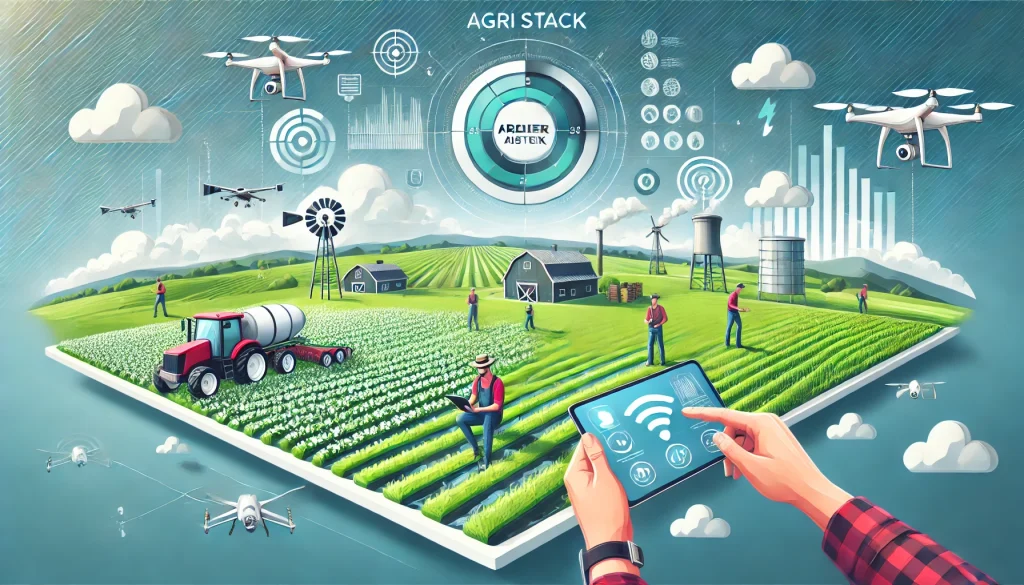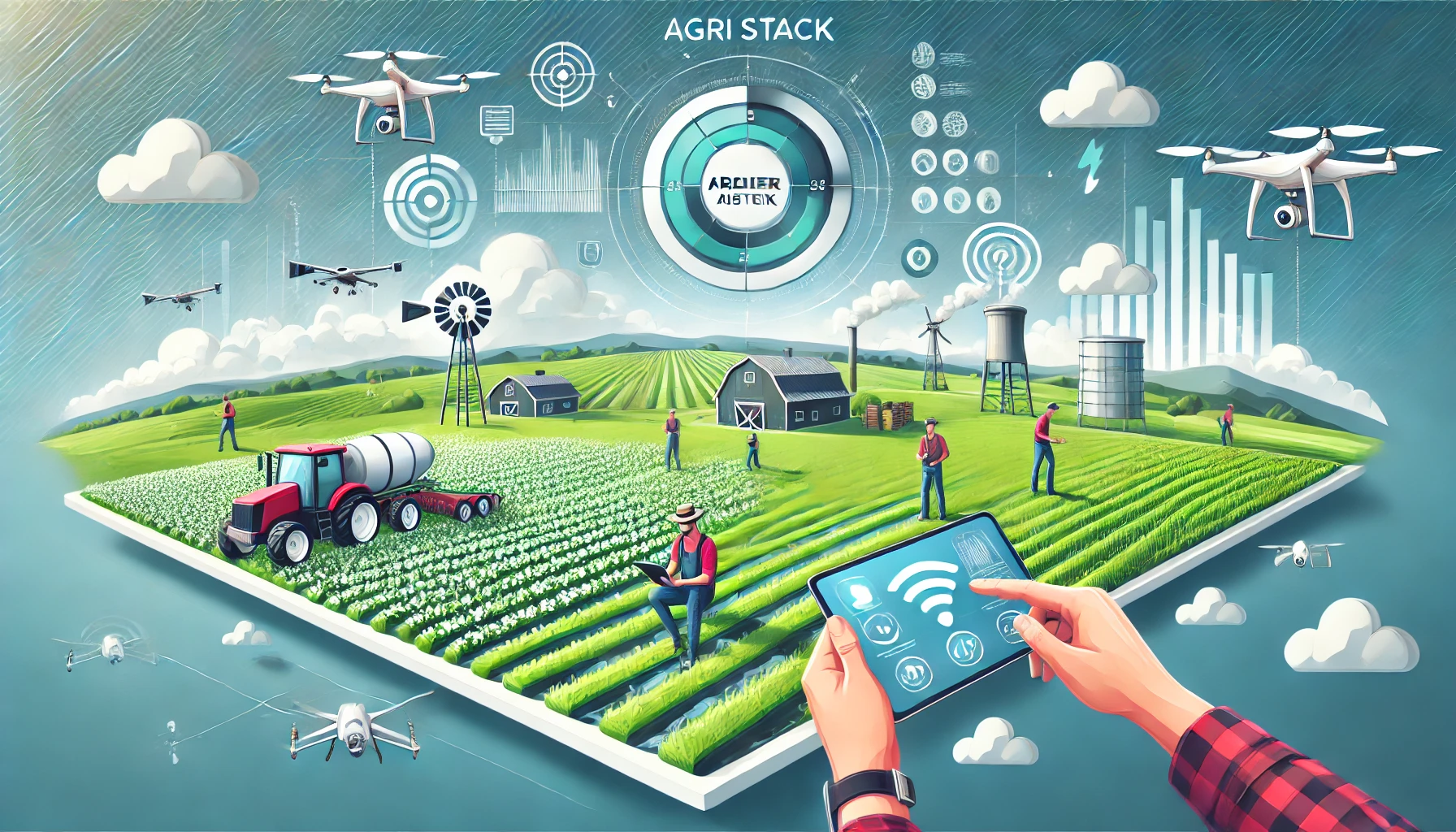
Agriculture is the backbone of many countries, especially in developing regions. But in the era of smartphones and satellites, farming has lagged behind in adopting digital systems—until now. If you’ve heard the term “Agri Stack Registration,” you’re likely curious about what it is and how it benefits farmers. Let’s dive straight into it and break everything down step by step.
What is Agri Stack Registration?
Agri Stack Registration is part of a larger initiative to create a digital database of farmers and their agricultural practices. The goal is simple: collect detailed information about farmers, such as their landholdings, crops, and soil conditions, and store it in a centralized system. This system will help provide better access to subsidies, schemes, and advisory services for farmers.
In plain terms, it’s like giving farmers a digital ID, which links them to all the benefits and programs they’re entitled to. Think of it as a one-stop solution where farmers get personalized advice, financial aid, and government support—all tailored to their specific needs.
Key Features of Agri Stack
To understand Agri Stack better, let’s look at its key components:
- Unique Farmer ID: This is a unique identification number assigned to each farmer. It’s linked to their Aadhaar card in India, ensuring accurate identification.
- Centralized Database: The system stores detailed information such as land size, crop patterns, and farming practices.
- Integration with Schemes: Farmers can access subsidies and benefits from schemes like PM-Kisan or crop insurance programs without jumping through hoops.
- Real-Time Data Access: Weather updates, pest alerts, and crop advisory services are provided directly to farmers.
Table: Components of Agri Stack Registration
| Feature | Description |
|---|---|
| Unique Farmer ID | Identifies farmers and links them to government programs. |
| Land Records | Digital records of land ownership and usage. |
| Weather Advisory | Real-time updates to prepare farmers for unexpected conditions. |
| Subsidy Integration | Seamless access to financial aid and government schemes. |
How to Register for Agri Stack
The registration process is straightforward and farmer-friendly. Here’s how it works:
Eligibility Criteria
Farmers who want to register must meet these conditions:
- Be a landowner or tenant farmer.
- Possess an Aadhaar card (for identity verification).
- Have basic details about their land (ownership documents or tenancy agreements).
Required Documents
Farmers need to provide the following documents:
- Aadhaar card
- Bank account details (linked with Aadhaar for subsidies)
- Land records or tenancy agreement
Step-by-Step Process
- Visit the Official Portal: Farmers can go to the government’s Agri Stack website or download the app if available.
- Enter Basic Information: Fill in your name, Aadhaar number, and land details.
- Verify via OTP: An OTP is sent to the mobile number linked with the Aadhaar card.
- Submit: Once the details are verified, a Unique Farmer ID is generated and shared.
The whole process doesn’t take long—it’s designed to be quick and user-friendly.
Benefits of Agri Stack Registration
Farmers stand to gain the most from this system. Let’s break down the key benefits:
1. Direct Access to Subsidies
With Agri Stack, subsidies for seeds, fertilizers, and irrigation systems are credited directly to the farmer’s bank account. This eliminates the middleman, reducing delays and corruption.
2. Better Advisory Services
Since the system stores soil data and crop history, farmers receive customized recommendations. For instance, they might get advice on which fertilizer to use or how to deal with pests.
3. Weather and Disaster Alerts
Real-time weather updates and alerts help farmers prepare for extreme weather events like floods or droughts. This reduces crop losses significantly.
4. Loan and Insurance Benefits
Banks and insurance companies use Agri Stack data to assess risks and offer loans or crop insurance to farmers. This makes the process more transparent and faster.
5. Increased Transparency
Everything—from subsidies to benefits—is tracked in the database. Farmers can check their status and get clarity on what’s happening with their applications.
Table: Benefits of Agri Stack Registration
| Benefit | Impact on Farmers |
| Direct Subsidies | Financial aid is transferred instantly without intermediaries. |
| Advisory Services | Personalized recommendations improve crop yield. |
| Weather Alerts | Helps farmers prepare for unexpected weather conditions. |
| Loan/Insurance Access | Simplifies the process of obtaining loans or crop insurance. |
Challenges in Implementing Agri Stack
Despite its benefits, there are hurdles that need attention:
1. Digital Divide
Many farmers in remote areas lack access to smartphones or stable internet connections. This makes it difficult for them to register or access Agri Stack features.
2. Data Privacy Concerns
The system collects sensitive data about farmers. If this data is misused or hacked, it could lead to privacy violations.
3. Lack of Awareness
Farmers might not be fully aware of how to register or why it’s important. Awareness campaigns are crucial for the program’s success.
4. Data Accuracy
Inaccurate or outdated records could lead to farmers being excluded from benefits. Ensuring that the database is updated regularly is essential.
How Agri Stack Helps the Government and Private Sector
While farmers are the primary beneficiaries, other stakeholders also gain:
- Government Bodies: With real-time data, policymakers can implement schemes more effectively.
- Private Agri-Tech Companies: These companies can use anonymized data to offer better products and services.
- Banks and Insurers: They get reliable data to assess risks and offer services like loans or insurance.
Table: Stakeholders and Their Benefits
| Stakeholder | Benefit from Agri Stack |
| Government | Improved policy implementation. |
| Private Agri-Tech Firms | Access to data for innovation. |
| Banks/Insurers | Reliable data for loans and insurance. |
Real-Life Applications of Agri Stack
1. Crop Health Monitoring
Farmers in pilot projects have used Agri Stack to get reports on crop health. These reports helped them take action against pests before they could cause damage.
2. Disaster Relief
After floods, Agri Stack data helped identify affected farmers and disburse relief funds quickly.
3. Fertilizer Distribution
In regions where the system has been implemented, farmers received fertilizers on time through direct benefit transfers.
Future of Agri Stack
The system has the potential to revolutionize agriculture by:
- Adopting Smart Farming: Integrating IoT devices to monitor soil and crop health.
- Sustainable Practices: Promoting eco-friendly farming techniques.
- Policy Reforms: Using data to shape agricultural policies.
Frequently Asked Questions (FAQs)
1. Is Agri Stack Registration mandatory?
No, it’s voluntary. However, registering ensures that farmers can access all available benefits.
2. What if a farmer doesn’t have Aadhaar?
Alternative identification methods are being explored for such cases.
3. Can tenant farmers register?
Yes, tenant farmers can register if they provide valid tenancy agreements.
Conclusion
Agri Stack Registration is more than just a database; it’s a step toward modernizing agriculture and empowering farmers. By addressing the challenges and raising awareness, it can create a fairer, more efficient agricultural ecosystem. If you’re a farmer or know one, it’s time to explore this initiative and make the most of the opportunities it offers.






